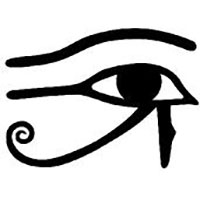When and for whom do psychodynamic therapists use guided imagery? Explicating practitioners’ tacit knowledge

Accepted: November 30, 2021
HTML: 52
All claims expressed in this article are solely those of the authors and do not necessarily represent those of their affiliated organizations, or those of the publisher, the editors and the reviewers. Any product that may be evaluated in this article or claim that may be made by its manufacturer is not guaranteed or endorsed by the publisher.
Authors
Guided imagery psychotherapy (GIP) is an established therapeutic method using creative mental imagery within a psychodynamic frame of reference. Although there is evidence for the method’s general effectiveness, it is yet unclear under which conditions and for which patients it should be used. The aim of this study was therefore to empirically identify indication criteria for the use of guided affective imagery (GAI) as part of psychodynamic therapies. We conducted semi-structured interviews with N=15 psychodynamic therapists also qualified as GAI training therapists. We asked them to recollect cases in which they had decided either for or against the use of imagery. The therapists described a complex interplay of different factors. Using grounded theory coding supplemented by elements of Consensual Qualitative Research we reconstructed from their accounts a sequential model of their indicative decisions. First, there is a consideration of clear contraindications related to reality testing and destructiveness. Second, there are aspects requiring a modified application of GAI such as emotional instability and post-traumatic stress disorder symptoms. In a final step, there are a number of characteristics of the patient, the therapist, the therapeutic relationship, the patients’ initial imagery and different therapeutic goals and foci which are weighed relatively to each other in order for therapists to reach an indication decision. We end by discussing ways in which the indicative decision model may be used to improve GAI training as well as the method’s differential efficacy and effectiveness.
How to Cite

This work is licensed under a Creative Commons Attribution-NonCommercial 4.0 International License.
PAGEPress has chosen to apply the Creative Commons Attribution NonCommercial 4.0 International License (CC BY-NC 4.0) to all manuscripts to be published.
Similar Articles
- Gianni Francesetti, Antonio Alcaro, Michele Settanni, Panic disorder: attack of fear or acute attack of solitude? Convergences between affective neuroscience and phenomenological-Gestalt perspective , Research in Psychotherapy: Psychopathology, Process and Outcome: Vol. 23 No. 1 (2020)
You may also start an advanced similarity search for this article.

 https://doi.org/10.4081/ripppo.2021.577
https://doi.org/10.4081/ripppo.2021.577




